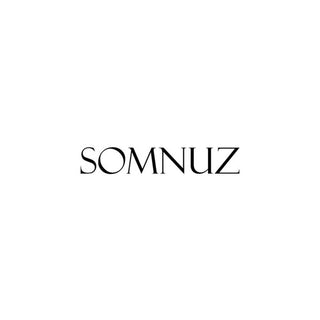Welcome to the world of HDB lifts! As you may know, HDB flats are known for their high-rise buildings and efficient lift systems. However, have you ever wondered about the technical aspects of HDB lifts? In this article, we will explore the height requirements for HDB lifts, the Lift Upgrading Programme (LUP) overview, and some frequently asked questions about HDB lifts.

Firstly, let's talk about the technical aspects of HDB lift installation. According to the Housing & Development Board (HDB), the floor-to-floor height is usually 3.6m from the 1st to 2nd storey, and the typical floor-to-floor height shall be 2.8m. The height of the parapet/railing at the access corridor, lift lobbies, and common areas, including linkages to MSCP, should not be less than 1.20m measured from the finished floor level. Additionally, the window cill height should be not less than 1.0m measured from the internal finished floor level.
Now, let's move on to the Lift Upgrading Programme (LUP) overview. The LUP upgrades lift services to achieve direct lift access on every floor where feasible, thus enhancing residents' convenience. The LUP only applies to lifts that are less than 18 years old from the start of the programme. On top of the LUP and LHG, HDB is modernizing more than 18,500 lifts over the next decade under the S$450 million Lift Enhancement Program (LEP).
Key Takeaways
- HDB lifts have specific height requirements, including floor-to-floor height, parapet/railing height, and window cill height.
- The Lift Upgrading Programme (LUP) upgrades lift services to achieve direct lift access on every floor where feasible, enhancing residents' convenience.
- HDB is modernizing more than 18,500 lifts over the next decade under the S$450 million Lift Enhancement Program (LEP).
Lift Upgrading Programme Overview

If you are a flat owner in Singapore, you may be eligible for the Lift Upgrading Programme (LUP). This programme is designed to improve lift access to your flat, making it more convenient for you and your family. In this section, we will provide you with an overview of the LUP, including its benefits, eligibility criteria, and subsidies available.
Benefits of the Lift Upgrading Programme
The LUP is a government initiative that aims to provide direct lift access to every floor of HDB blocks where feasible. The programme has several benefits, including:
- Improved convenience: With direct lift access to every floor, residents can save time and effort when carrying heavy items or pushing strollers.
- Enhanced accessibility: The LUP benefits the elderly, the disabled, and families with young children, making it easier for them to move around.
- Increased safety: The LUP reduces the risk of accidents, such as slips and falls, that can occur when using stairs.
Eligibility and Subsidies
To be eligible for the LUP, you must be a Singapore citizen or a Singapore permanent resident and living in an HDB block that is more than 20 years old. The age of the block is an important factor in determining whether it is feasible to provide direct lift access to every floor.
The cost of the LUP varies depending on the age of the block and the number of lifts required. The government provides subsidies to eligible flat owners to help offset the upgrading costs. The amount of subsidy depends on the flat owner's income and whether the town council has already started upgrading the lifts.
To find out more about the LUP, you can visit the Housing & Development Board website. You can also check the upcoming polling events and results to see if your block is eligible for the LUP.
Upgrade your living space today with Megafurniture.sg, a leading Singapore ecommerce furniture store. With a wide range of furniture options, you can find the perfect pieces to complement your newly upgraded flat.
Technical Aspects of HDB Lift Installation

If you are considering installing a lift in your HDB building, there are several technical aspects that you need to consider. These aspects include safety and construction standards, technical and site constraints, and many other factors that affect the feasibility of the lift installation.
Safety and Construction Standards
When it comes to lift installation in HDB buildings, safety is of utmost importance. The Building and Construction Authority (BCA) has set strict safety and construction standards that must be adhered to. These standards ensure that the lift installation meets the required safety standards and is built to last.
Technical and Site Constraints
The technical and site constraints of your building will also play a significant role in the feasibility of the lift installation. For instance, if your building has limited space, it may be challenging to install a new lift shaft. However, with the latest technology and expertise, new lift shafts can be installed in one day, and the lift parts can be installed with architectural, mechanical, and electrical works.
The technical viability of your building is another factor that needs to be considered. For example, if your building is old and has a weak foundation, you may need to consider detection and diversion works or micro-piling to ensure that the lift installation is feasible.
In conclusion, installing a lift in your HDB building is an excellent way to improve mobility and accessibility. However, you need to consider the technical and site constraints of your building and adhere to the safety and construction standards set by the BCA. With the right expertise and technology, your lift installation can be a success.
Frequently Asked Questions

What are the dimensions of HDB lift interiors?
When it comes to the dimensions of HDB lift interiors, there is no one-size-fits-all answer. The size of the lift interior depends on the specific block and the type of lift installed. However, most HDB lifts are designed to accommodate a maximum of 13 passengers or 1,000 kilograms.
How wide is the entrance to an HDB lift?
The entrance to an HDB lift is typically around 80 centimetres wide. This is wide enough to accommodate most standard-sized wheelchairs and mobility devices.
What's the maximum weight capacity for HDB lifts?
The maximum weight capacity for HDB lifts is typically 1,000 kilograms. This weight limit includes the weight of the passengers as well as any items they may be carrying.
Can a king size mattress fit inside an HDB lift?
It depends on the size of the lift and the dimensions of the mattress. Generally, most HDB lifts can accommodate a king size mattress as long as it is properly packaged and not too bulky.
What times are drilling activities permitted in HDB flats?
According to HDB regulations, drilling activities are not allowed between 10pm and 7am. This is to ensure that residents are not disturbed during their sleeping hours.
How tall are the ceilings in newly built HDB flats?
The height of the ceilings in newly built HDB flats varies depending on the specific block and the type of flat. However, most new HDB flats have ceiling heights of around 2.6 to 2.7 metres.
If you're looking for furniture to fit inside your HDB flat, Megafurniture.sg has a wide selection of space-saving and stylish pieces to choose from. Whether you're looking for a compact sofa or a multi-functional dining table, Megafurniture.sg has you covered. Shop now and transform your HDB flat into a comfortable and stylish home.



